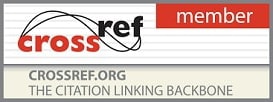P-ISSN: 2349-6800, E-ISSN: 2320-7078
Journal of Entomology and Zoology Studies
2021, Vol. 9, Issue 1
Economics of feeding of Sahiwal calves under different dietary regimes and management systems
Vijay Kumar, Vijay Kumar Chaudhary, Mohan Lal Chaudhary, Vikramjit Singh and Deepika Dhuria
The present experiment was conducted on twenty four female Sahiwal calves of 4 to 8 months age. Calves were subjected to four treatment groups viz. 100 percent of ICAR feeding and routine management (T1), 100 percent of ICAR feeding and improved management (T2), 120 percent of ICAR feeding and routine management (T3) and 120 percent of ICAR (Indian Council of Agricultural Research) feeding and improved management (T4). The time spent by a labourer per calf per day was recorded as 11.09±0.311, 11.90±0.360, 10.43±0.133 and 12.56±0.174 minutes in respective groups. The time spent by labourer for water splashing and time spent per calf per day were highly significant (P<0.001) influenced by levels of feeding and management systems, while time spent on feeding of calves was only influenced by levels of feeding. The cost per kg weight gain was lowest in 120 percent of ICAR feeding (Rs.108) and improved management (Rs. 110) rather than 100 percent of ICAR feeding (Rs. 117) and routine management systems (Rs. 114). The total cost of rearing up to 350 kg body weight was lowest in calves fed 120 percent of ICAR feeding (Rs.27030) followed by calves kept in improved management (Rs.27677), routine managements (Rs.28384) and calves fed 100 percent of ICAR feeding (Rs.29225). Both the feed conversion efficiency as well as cost of rearing was most favourable for this management package and even calves were more comfortable reared under improved management systems.
Pages : 202-205 | 496 Views | 124 Downloads
How to cite this article:
Vijay Kumar, Vijay Kumar Chaudhary, Mohan Lal Chaudhary, Vikramjit Singh, Deepika Dhuria. Economics of feeding of Sahiwal calves under different dietary regimes and management systems. J Entomol Zool Stud 2021;9(1):202-205.
Related Journal Subscription
Important Publications Links
Important Links










